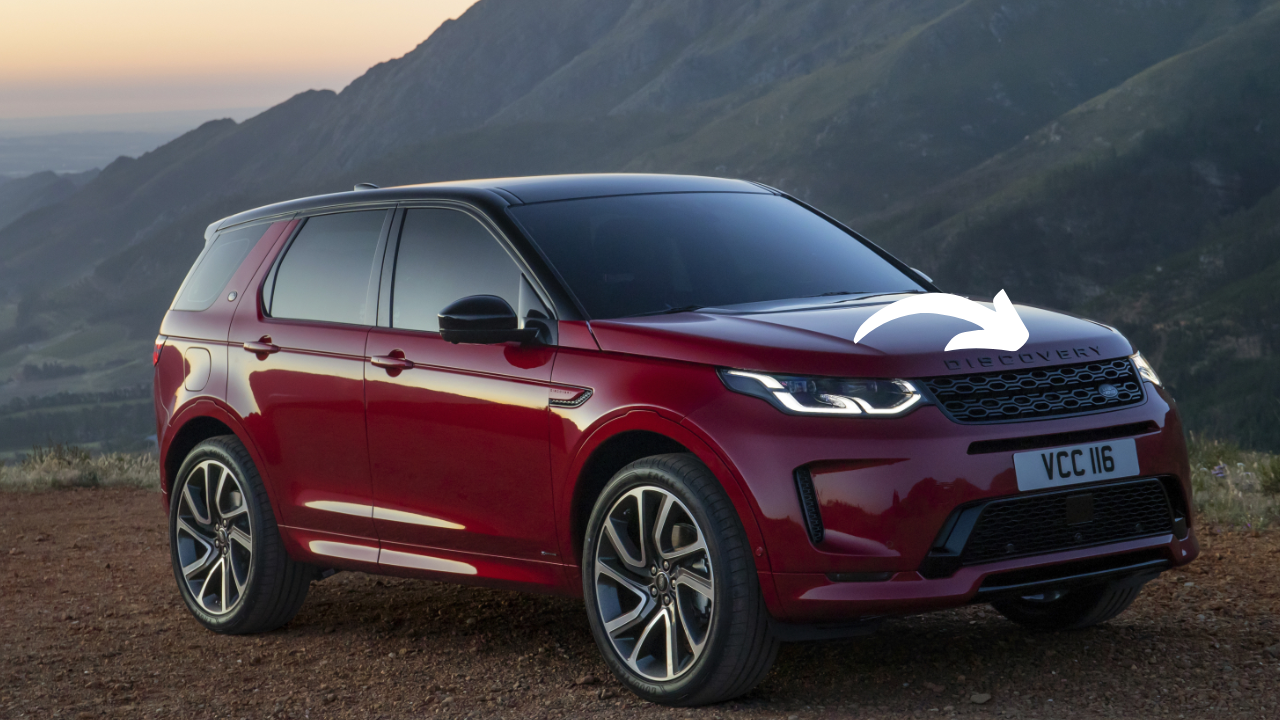The 2026 Land Rover Discovery Sport has arrived with a refreshed design, updated technology, and a streamlined powertrain lineup, positioning itself as a versatile compact SUV in the premium market. For buyers seeking a balance between traditional petrol performance and the efficiency of hybrid technology, the Discovery Sport offers compelling options. With a plug-in hybrid (PHEV) and mild-hybrid diesel engines, alongside a potent petrol variant, the 2026 model aims to cater to diverse driving needs while maintaining Land Rover’s signature off-road capability and luxury. But does it truly strike the perfect balance between petrol and hybrid power? This article delves into the Discovery Sport’s powertrains, performance, efficiency, features, and drawbacks to answer that question.
Overview of the 2026 Land Rover Discovery Sport
Land Rover has revamped the Discovery Sport for 2026, consolidating its range into three variants across two trim levels: Landmark and Metropolitan, with Dynamic S as the entry-level specification. This update follows recent refreshes to the larger Discovery and Defender models, signaling Jaguar Land Rover’s (JLR) commitment to keeping the Discovery Sport competitive despite its decade-long presence in the market. Priced from £45,440 in the UK (approximately $50,175 in the US), the Discovery Sport remains Land Rover’s most affordable SUV, offering a blend of family-friendly practicality, premium appeal, and advanced technology.
The 2026 model introduces subtle styling updates, including new alloy wheel designs, a gloss-black grille on the Dynamic S, and a mountain-range logo on the Landmark’s treadplates and puddle lights. Inside, an 11.4-inch curved touchscreen with JLR’s Pivi Pro infotainment system, wireless Apple CarPlay, Android Auto, and a digital instrument cluster are standard. Lifestyle-focused accessory packs like “Beach Days,” “Road Trips,” and “Snow Days” enhance its versatility for family adventures. However, the core question lies in its powertrain options: do the petrol and hybrid offerings deliver a harmonious balance of power, efficiency, and practicality?
Powertrain Options: Petrol, Mild-Hybrid, and Plug-In Hybrid
The 2026 Discovery Sport’s powertrain lineup is streamlined but diverse, offering three main options: a petrol engine, mild-hybrid diesel engines, and a plug-in hybrid (PHEV). All models feature all-wheel drive (AWD) and some form of hybrid technology, aligning with JLR’s electrification strategy. Here’s a breakdown of each:
1. Petrol Engine (P250)
-
Specifications: The Landmark and Metropolitan trims offer a 2.0-litre four-cylinder turbo petrol engine (P250), producing 184kW (246 horsepower) and 365Nm of torque, paired with a nine-speed automatic transmission.
-
Performance: The P250 delivers adequate performance for a compact SUV, with a 0-60 mph time of around 7.5 seconds. It’s responsive for daily driving but lacks the agility of competitors like the BMW X3 or Audi Q5.
-
Efficiency: Fuel economy is a weak point, with EPA estimates of 19 mpg city, 23 mpg highway, and 20 mpg combined—lagging behind rivals like the BMW X3 M40i (29 mpg highway). This thirstiness makes the petrol variant less appealing for efficiency-conscious buyers.
2. Mild-Hybrid Diesel Engines (D165 and D200)
-
Specifications: Available in Dynamic S and Landmark trims, the D165 produces 161bhp and 280lb-ft of torque, while the D200 offers 201bhp and 317lb-ft, both using a 2.0-litre four-cylinder diesel with 48-volt mild-hybrid assistance and a nine-speed automatic.
-
Performance: The D200 is the stronger choice, with a 0-62 mph time of 8.6 seconds and a 2,500kg towing capacity, ideal for family loads. The D165 feels sluggish, taking 10.2 seconds to reach 62 mph.
-
Efficiency: The mild-hybrid system smooths stop-start operation and recovers energy during deceleration, but fuel economy is modest. The D200 achieves 39.8–42 mpg (UK WLTP figures), competitive but not class-leading. The mild-hybrid tech provides marginal efficiency gains, making these engines a practical choice for high-mileage drivers but not a significant leap toward electrification.

3. Plug-In Hybrid (P270e/P300e)
-
Specifications: The P270e (or P300e in some markets) combines a 1.5-litre three-cylinder petrol engine (200hp) with a 109hp electric motor on the rear axle, delivering a combined 265bhp (or 309hp in the P300e) and 398lb-ft of torque. It uses a 14.9kWh battery (12.2kWh usable) and an eight-speed automatic.
-
Performance: The PHEV accelerates briskly, reaching 0-62 mph in about 6.6 seconds, and transitions smoothly between electric and petrol power. However, the three-cylinder engine can sound thrummy under hard acceleration.
-
Efficiency: With an electric-only range of 36–37 miles (WLTP, real-world closer to 30 miles), the P270e achieves up to 185.3 mpg (WLTP) when fully charged, though this drops to 30–33 mpg when the battery is depleted. CO2 emissions of 35–44g/km make it attractive for company car tax in the UK. A 0–80% charge takes 30 minutes with a 32kW DC fast charger or two hours with a 7kW wallbox.
Balancing Petrol and Hybrid: Strengths and Weaknesses
Strengths of the Petrol Engine
The P250 petrol engine shines in its simplicity and performance. It offers robust power for highway cruising and light off-road tasks, appealing to buyers who prioritize responsiveness over fuel savings. Its nine-speed automatic is smooth, and standard AWD ensures confidence in varied conditions. The petrol variant is also available with seven seats (unlike the PHEV), making it a practical choice for larger families. For those who rarely plug in or lack charging infrastructure, the P250 avoids the complexity of hybrid systems.
However, its poor fuel economy (20 mpg combined) and higher running costs compared to rivals like the Audi Q5 (25 mpg highway) limit its appeal for cost-conscious buyers. The petrol engine also lacks the electrified refinement of competitors’ mild-hybrid or PHEV options.
Strengths of the Mild-Hybrid Diesels
The D165 and D200 diesel engines benefit from mild-hybrid technology, which enhances efficiency slightly and reduces emissions. The D200’s strong torque and towing capacity make it ideal for long-distance drivers or those needing to haul trailers. Its fuel economy (around 40 mpg) is respectable for a premium SUV, and the smooth stop-start system adds refinement. These engines are well-suited for buyers in rural areas or those with high annual mileage, where diesel’s efficiency outweighs petrol’s performance.
Yet, the mild-hybrid system’s impact is minimal, offering little in terms of electric-only driving or significant fuel savings. The D165’s sluggish performance and the diesel engines’ gruff reputation in earlier models may deter buyers seeking a premium driving experience.
Strengths of the Plug-In Hybrid
The P270e/P300e PHEV is the standout for efficiency-focused buyers. Its 36-mile electric range covers most daily commutes, potentially eliminating petrol use for short trips. Low CO2 emissions (35g/km) and high WLTP fuel economy (185.3 mpg when charged) make it cost-effective for company car drivers or urban residents with charging access. The PHEV’s brisk acceleration and smooth powertrain transitions add refinement, while DC fast charging (0–80% in 30 minutes) enhances convenience. Off-road, the electric motor’s instant torque aids traction, though AWD requires the petrol engine in demanding conditions.
However, the PHEV sacrifices the seven-seat option, limiting its appeal for larger families. When the battery is depleted, fuel economy drops to 30–33 mpg, worse than the diesels and comparable to the petrol engine. The three-cylinder engine’s noise under load and the added weight (2,168kg) reduce on-road agility compared to rivals like the BMW X3 PHEV. Reliability concerns, including past software glitches and battery overheating, also linger, though JLR has improved in recent years.
Does It Strike the Perfect Balance?
The 2026 Discovery Sport’s powertrain lineup offers something for everyone, but whether it achieves a “perfect balance” depends on the buyer’s priorities:
-
For Performance and Simplicity: The P250 petrol engine delivers solid power and family-friendly seating but is hindered by poor fuel economy and higher running costs. It’s best for those who value performance over efficiency and don’t rely on charging infrastructure.
-
For Long-Distance Efficiency: The D200 mild-hybrid diesel provides respectable fuel economy and towing capacity, ideal for rural or high-mileage drivers. However, its mild-hybrid tech offers limited electrification benefits, falling short of a true hybrid experience.
-
For Urban Efficiency: The P270e PHEV excels for city dwellers with charging access, offering significant fuel savings and low emissions for short trips. Its drawbacks—limited seating, reduced efficiency when uncharged, and engine noise—prevent it from being universally ideal.
The Discovery Sport’s strength lies in its versatility, blending premium features, off-road capability, and a range of powertrains. Its PHEV is a strong contender for efficiency, but the petrol and diesel options lag behind competitors in fuel economy and refinement. Rivals like the BMW X3 and Audi Q5 offer more agile handling, better fuel economy, and superior reliability, while the Lexus NX provides a more frugal hybrid alternative. The Discovery Sport’s off-road prowess and luxurious interior remain unmatched, but its powertrains don’t fully harmonize petrol and hybrid advantages.
Features and Practicality
Beyond powertrains, the Discovery Sport excels in practicality. The Landmark trim includes a panoramic sunroof, sliding second-row seats, and a 3D surround camera, while the Metropolitan adds 14-way adjustable heated/cooled seats and a 14-speaker Meridian sound system. The 963-litre boot (with five seats) matches non-hybrid models, and optional seven seats enhance flexibility. Off-road features like Terrain Response 2 and Ground View (a camera-based “transparent bonnet”) ensure capability in tough conditions.
However, the 11.4-inch touchscreen, while modern, has reduced physical controls, potentially complicating operation. Reliability remains a concern, with Land Rover ranking 28th out of 32 brands in the 2023 What Car? Reliability Survey. A five-year/60,000-mile warranty (eight years/100,000 miles for the PHEV battery) offers some reassurance.
Competitive Landscape
The Discovery Sport faces stiff competition:
-
BMW X3 PHEV: Offers sharper handling, a 40-mile electric range, and better reliability but lacks seven seats.
-
Audi Q5 TFSI e: Delivers refined performance and a 37-mile electric range but is less capable off-road.
-
Lexus NX Hybrid: Provides superior fuel economy and reliability but lacks the Discovery Sport’s off-road prowess.
-
Mercedes-Benz GLB: Offers seven seats and premium appeal but struggles with off-road capability.
The Discovery Sport’s unique blend of off-road ability, luxury, and hybrid options sets it apart, but competitors often outperform in efficiency, handling, or reliability.
Looking Ahead
The 2026 Land Rover Discovery Sport is a compelling compact SUV but falls short of the “perfect balance” of petrol and hybrid power. The P270e PHEV offers impressive efficiency for urban drivers with charging access, covering most commutes on electric power. However, its five-seat limitation, noisy engine, and poor fuel economy when uncharged detract from its versatility. The P250 petrol engine provides solid performance but is thirsty, while the D200 mild-hybrid diesel offers decent efficiency but minimal electrification benefits.
For buyers prioritizing off-road capability, luxury, and family-friendly features, the Discovery Sport remains a strong choice, with its updated styling, advanced tech, and versatile accessory packs. Yet, its powertrains don’t fully integrate petrol and hybrid strengths as seamlessly as rivals like the BMW X3 or Audi Q5. If you have charging infrastructure and primarily drive short distances, the PHEV comes closest to balancing efficiency and performance. For others, the petrol or diesel options may suffice, but they lack the efficiency to make the Discovery Sport a class leader. Visit www.landrover.com or a local retailer to explore configurations and test drives to determine if the 2026 Discovery Sport meets your needs.
